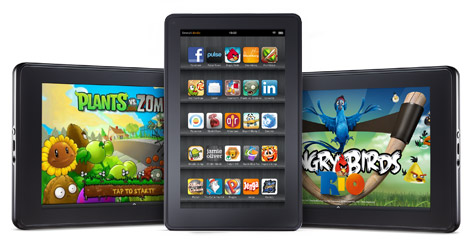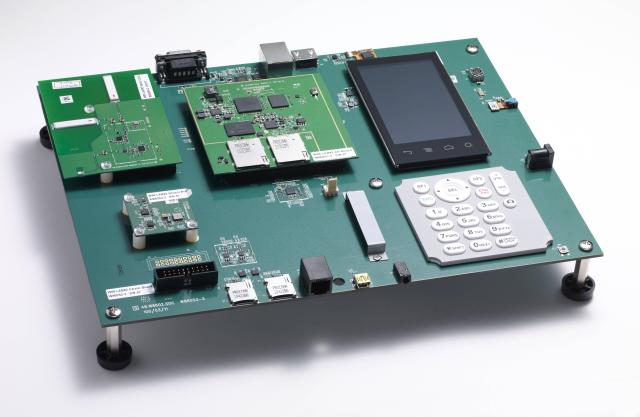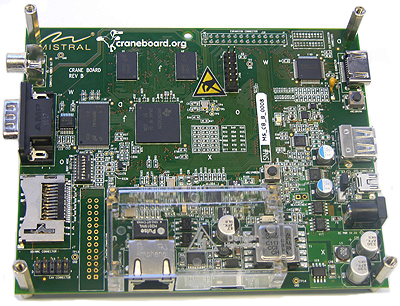Earlier this week, the Linux Foundation announced yet another new Linux-based open source operating system for mobile and consumer devices based on Web standards called Tizen. This project is backed by Intel and Samsung who have already been involved with Linux based operating systems before, respectively with MeeGo and Bada. Both companies will be part of the technical steering team. It looks like Tizen will replace Meego overtime. Meego developers blasted the move and posted angry comments especially in relation to Qt support and the fact that all the previous work put into the project has probably gone to waste. My take is that using HTML5 is probably not such a bad ideas as many applications are currently developed in HTML5/Javascript for Chrome Webstore for example, and it could make porting those to Tizen straightforward. Tizen will support multiple device categories including: Smartphones Tablets Smart TVs Netbooks In-vehicle infotainment devices […]
NVidia Tegra 3 ZTE T98 Android Tablet
We’ve already seen some Quad Core Tegra 3 demos and talks about Tegra 3 Tablets coming this year, but we had not heard about real products yet. ZTE (中兴) is expected to releast ZTE T98, possibly the first Tegra 3 Honeycomb Tablet later this year., which has been spotted in Beijing by zol.com.cn at PT/EXPO COMM CHINA 2011. Here are the ZTE T98 product features and specifications: Operating System: Android3.2 Processor: Nvidia Tegra 3 @ 1.5GHz System Memory: 1GB Flash Storage: 16GB Display: 7″ Capacitive Touche Screen with 1280×800 resolution. Network: Wifi, 3G (TD-SCDMA) Built-in Audio Chip Video output up to 1080p External Ports: 3.5mm headphone jack and power jack. Battery: Lithium Battery, 4000 mA Camera: Front camera: 2 MP, Rear camera: 5 MP. Support for JPEG,GIF and BMP pictures Sensor: gravity and accelerometer 11.5mm thick ZTE announced it would be ready in 2011, but no exact date and pricing […]
How to Transfer files between Host and Qemu
I previously posted instructions to install and run nano and ARM Linux Internet Platform (ALIP) distribution images for Overo and Beagleboard on QEMU, If the image support networking, you could use ssh (install dropbear server in qemu) or nfs to transfer files between the host computer and qemu, or even run your program from the NFS share. This should be possible to do that on the Overo emulator since it support Ethernet. However, although I can access Internet, I cannot access the host via ssh as the host is in a private subnetwork (192.168.0.0) and qemu in another (10.0.2.0). We would probably have to enable bridge networking for that but the tun driver is apparently not compiled in ALIP kernel. I’ll look into that later on. [Update: Finally, we don’t need tun/tap to make this work, please read http://www.cnx-software.com/2011/10/02/how-to-transfer-files-between-host-and-qemu-via-ssh-and-nfs/ for details.] Today, I’ll just show how to mount a Qemu […]
Amazon Kindle Fire Tablet Powered by TI OMAP4 Processor
Amazon unveiled its first Android tablet yesterday called the Kindle Fire. The Kindle Fire seems to have similar hardware specifications as the RIM PlayBook. The Amazon tablet is powered by a Texas Instruments OMAP 4 dual core processor, features a 7″ capacitive touchscreen, using IPS (in-plane switching display) technology with 1024×600 resolution, 8GB of flash storage, WiFi support, a Micro-USB port, top-mounted stereo speakers and a stereo headphone jack. The Kindle Fire apparently lacks a microSD or SD slot, does not support 3G and does not have camera. It measures 191 x 119 x 11 millimeters and weighs 413.9 grams. When Wi-Fi is disabled, the battery will last for up to eight hours of continuous reading or 7.5 hours of video playback. The good news is that it will be sold for 199 USD. It’s 100 USD cheaper than the (already cheap) Archos 80 G9 with a similar hardware, although […]
Android 2.3 Coming to Sony Ericsson Xperia Devices
CyanogenMod has announced that they would work with FreeXperia and support the following devices in the next release of CyanogenMod: Xperia Arc Xperia Neo Xperia Mini Xperia Mini Pro Xperia Play Xperia Ray Xperia X10 Xperia X8 Xperia X10 Mini Xperia X10 Mini Pro Cyanogen (Steve Kondik) also mentionned that FreeXperia is now part of CyanogenMod development team. Back in January, I’d already posted that it was possible to install a hacked version of Android 2.2 on Xperia X10. You can follow Xperia X10 Development on CM7.1 on XDA form and obtain the source code on github. ROMs based on CyanogenMod 7 for Xperia X8 and Xperia X10 Mini are available at http://code.google.com/p/minicm/
Qualcomm APQ8060 Android Development Board BSQUARE DragonBoard
BSQUARE announced the DragonBoard a development board built around Qualcomm APQ8060 mainly targeted at Android 2.3 development. Here’s an excerpt of the press release: BSQUARE Corporation, a leading enabler of smart, connected devices, today announced general availability of DragonBoard™, an Android™ development platform based on Qualcomm Incorporated’s Snapdragon™ APQ8060 processor. DragonBoard provides device makers, application developers and other hardware and software ecosystem suppliers with early access to the APQ8060 processor in a flexible development environment. DragonBoard is a powerful, feature-rich development board that offers exposed connectors, adapters and expansion headers including JTAG, Ethernet and mini USB. These features provide deep levels of development, testing and expansion that allow OEMs to do early prototyping of APQ8060 based systems, component suppliers to integrate devices with the APQ8060 processor and Android application developers to create innovative applications for the growing open source development community. When combined with BSQUARE products and services, DragonBoard enables […]
Redirect all output to a log file
When you build a program or execute a shell command, the messages are often outputted to both standard output and standard error. If you want to send all ‘printf’ to a log file, use the following command: make > make.log 2>&1 “2>&1” is the part that redirects standard error to standard out, allowing you to capture all messages.
CraneBoard: Low Cost Development Board based on TI AM3517
The CraneBoard is a low-cost, open-source hardware development platform based on the AM3517 Sitara ARM Cortex-A8 microprocessor. The CraneBoard was announced in December 2010, can be purchased for 199 USD and can be an alternative to the Beagleboard-xM. AM3517 is especially suited to industrial applications and would be a preferable platform if your project needs CAN or PoE support. The board has less RAM (256 MB vs. 512MB) and no camera port. Here are the features and specifications of the board (I highlighted the differences with Beagleboard-xM in green): AM3517 Sitara ARM Cortex-A8 – 600MHz Integrated 3D Graphics Accelerator RAM: 256 MB NAND Flash: 256MB Support for on-chip peripherals: 10/100 EMAC USB OTG utilizing on-processor PHY 3.3V I/O CAN Bus DDR2 Power over Ethernet and other power options including USB and DC MMC/SD Card Support Fully open-source four-layer PCB Fully Open Source Linux Board Support package (2.6.32) Based on existing […]











